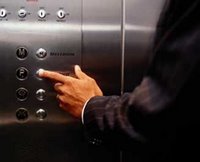But hear me out... if you truly do your job as a salesperson by selling the benefits and value of your product then your customer will want to buy your product from anyone who is selling it. This concept has led me to develop the life cycle of a sales rep.
Baby Sales Rep
Toddler Sales Rep
Teenage Sales Rep
This salesperson is pretty seasoned in selling his product. He is focused on developing his own style and he is maturing in his role. Everything still seems to revolve around the salesperson and his own world. He is more concerned with selling himself than his product or company. His approach is more "buy from me because you like me - and I'll take care of you." And, because it is a fact that we buy from people we like the teenage sales rep will experience success.
This salesperson can move over to a competing company and convince the customer to buy from him at the new company. What this salesperson doesn't have is the support to maintain the customer when catastrophe hits. That is, when the product fails then the customer will realize that the teenage rep can't take care of him.
Adult Sales Rep
This salesperson realizes that to maintain long term customers that the salesperson, the product and the company all have to be part of the package. Yes, it is important to have a good relationship with your customers. But it is also important to continually educate them on the benefits your product and service provide. It is important to educate customers on the integrity and quality with which your company operates. Your customers should be so "sold" on your product that if your were promoted and moved to another country they would continue to buy from the company.
Here are some ways to create customers that are really "sold" on your product:
- Tell your customer about the quality control that your factory uses to minimize defects
- Introduce your client to different layers of your company such as a technician, senior manager, engineer, etc.
- Tell the customer about awards or achievements that your company experiences
- Mail your customer a copy of an article written about your product or company
- Whenever they are happy with you as a sales rep don't forget to use this an an opportunity to brag on the company, too. For example, you might say, "The reason I was able to get you the replacement part so soon is because we have a 24 hour call facility to handle spare parts."







